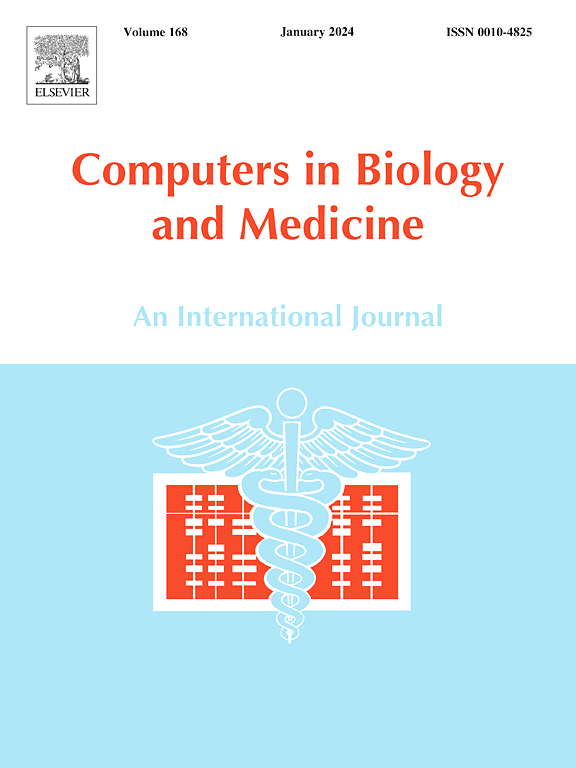Natural language processing for identifying major bleeding risk in hospitalised medical patients
IF 6.3
2区 医学
Q1 BIOLOGY
引用次数: 0
Abstract
Background
Major bleeding is a severe complication in critically ill medical patients, resulting in significant morbidity, mortality, and healthcare costs. This study aims to assess the incidence and risk factors for major bleeding in hospitalised medical patients using a Natural Language Processing (NLP) model.
Methods
We conducted a retrospective, cross-sectional observational study using electronic health records of adult patients admitted through the Emergency Department at Odense University Hospital from January 2017 to December 2022. Major bleeding during admission was identified and validated using a natural language model, with events classified according to current guidelines. Risk factors, including demographics, comorbidities, and biochemical values at admission, were evaluated. Two risk assessment models (RAMs) were developed using Cox proportional hazards regression. Validation included, bootstrapping, K-fold cross validation, and cluster analyses.
Results
Of the 46,439 eligible patients, 1246 (2.7 %) experienced major bleeding. Risk factors for major bleeding included older age, male sex, alcohol consumption, higher systolic blood pressure, lower haemoglobin, and higher creatinine. RAM 1, which included biochemical data and comorbidities, demonstrated robust predictive performance (Harrell's C-statistic = 0.726). RAM 2, a simplified model without comorbidities, maintained similar predictive accuracy (C-statistic = 0.721), indicating its potential utility in clinical settings with limited resources for detailed patient histories. Results were consistent throughout validation.
Conclusion
This study highlights the incidence and risk factors of major bleeding in medical patients, emphasizing the predictive value of routinely measured biochemical markers. Furthermore, it shows the applicability of NLP models in identifying bleeding episodes in EHR text.
用于识别住院病人大出血风险的自然语言处理
背景大出血是危重症患者的严重并发症,可导致严重的发病率、死亡率和医疗费用。本研究旨在利用自然语言处理(NLP)模型评估住院医疗患者大出血的发生率和危险因素。方法对2017年1月至2022年12月欧登塞大学医院急诊科收治的成年患者的电子健康记录进行回顾性、横断面观察性研究。使用自然语言模型识别和验证入院期间的大出血,并根据现行指南对事件进行分类。评估危险因素,包括人口统计学、合并症和入院时的生化值。采用Cox比例风险回归建立两个风险评估模型(RAMs)。验证包括自举、K-fold交叉验证和聚类分析。结果在46439例符合条件的患者中,1246例(2.7%)出现大出血。大出血的危险因素包括年龄较大、男性、饮酒、收缩压较高、血红蛋白较低和肌酐较高。RAM 1,包括生化数据和共病,显示出强大的预测性能(Harrell的c统计量= 0.726)。ram2,一个没有合并症的简化模型,保持了类似的预测准确性(C-statistic = 0.721),这表明它在临床环境中具有潜在的实用性,因为资源有限,无法获得详细的患者病史。结果在整个验证过程中是一致的。结论本研究突出内科患者大出血的发生率及危险因素,强调常规生化指标的预测价值。此外,它显示了NLP模型在EHR文本中识别出血事件的适用性。
本文章由计算机程序翻译,如有差异,请以英文原文为准。
求助全文
约1分钟内获得全文
求助全文
来源期刊

Computers in biology and medicine
工程技术-工程:生物医学
CiteScore
11.70
自引率
10.40%
发文量
1086
审稿时长
74 days
期刊介绍:
Computers in Biology and Medicine is an international forum for sharing groundbreaking advancements in the use of computers in bioscience and medicine. This journal serves as a medium for communicating essential research, instruction, ideas, and information regarding the rapidly evolving field of computer applications in these domains. By encouraging the exchange of knowledge, we aim to facilitate progress and innovation in the utilization of computers in biology and medicine.
 求助内容:
求助内容: 应助结果提醒方式:
应助结果提醒方式:


